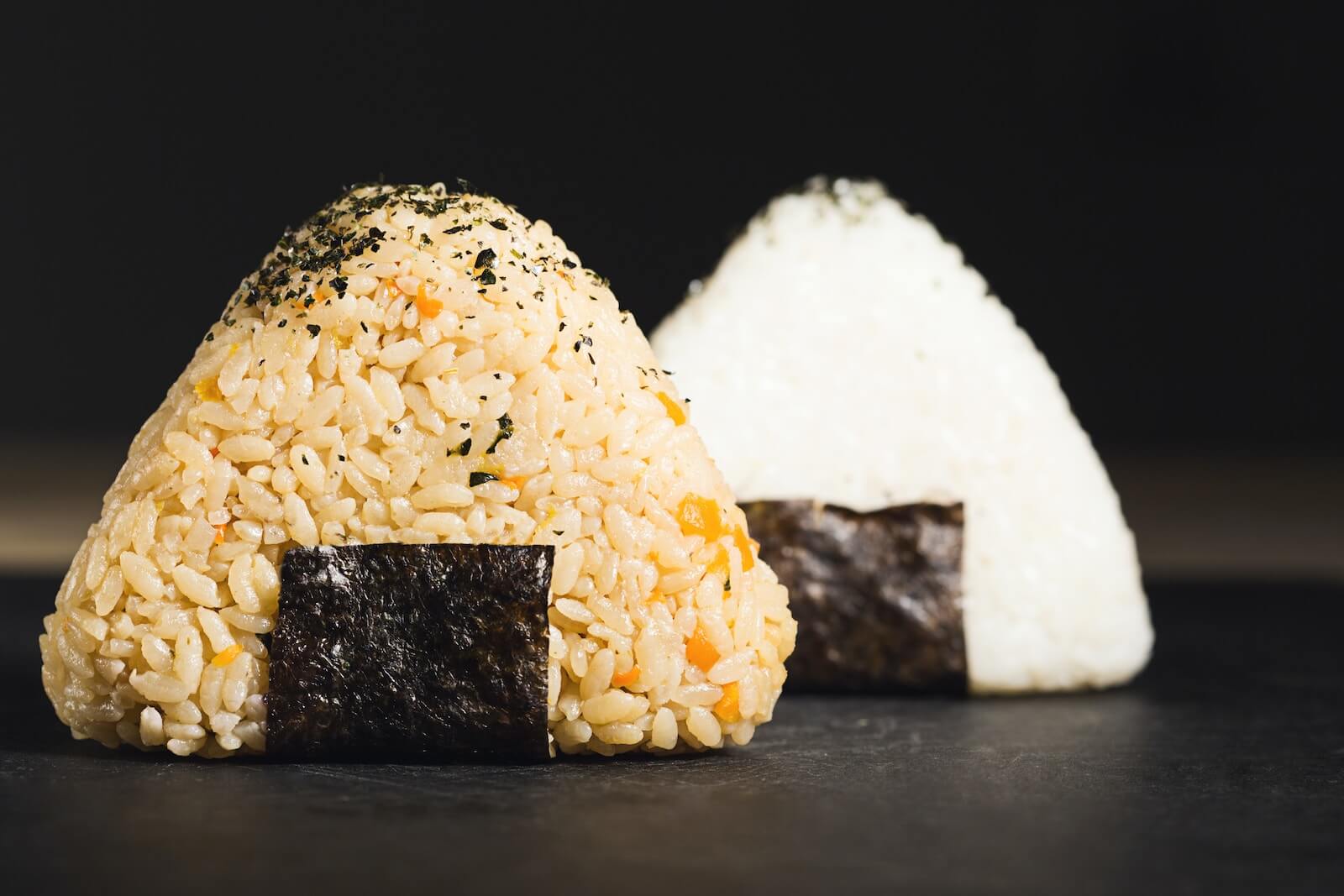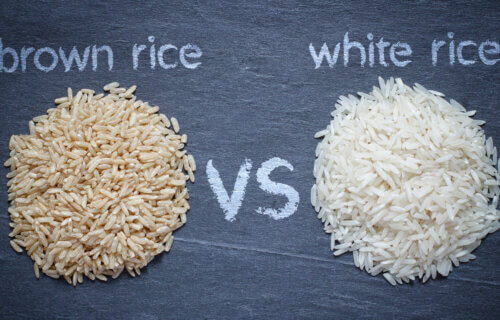For centuries, rice has been a key component across several cultures in China, Japan, India, South Korea and other Asian nations for thousands of years. According to the Rice Association, there are over 40,000 rice variations that exist, but the exact number remains unknown. In recent years, modern-day diet culture has continued to promote the idea that brown rice is healthier than white rice.
So, is that really true? Let’s take a look at the facts.
What’s the difference between brown and white rice?
Brown rice is a whole grain while white rice is not. Brown rice has the bran and germ intact, while white rice has been refined to have these removed. Given the tough bran outer layer, it typically takes longer to cook and it yields a chewier texture. The nutrients in brown rice are better retained because they are found in the bran and germ, therefore there are significantly less nutrients in white rice.

Why do people say brown rice is healthier?
Across the board, it’s generally accepted than whole grain is preferable compared to white, refined grain. This goes for breads, cereals, etc. Since brown rice is considered a whole grain, it’s often immediately deemed healthier. Given that the bran is intact, there is slightly more fiber, vitamins, and minerals. Research also suggests that brown rice digests slower than white rice, having a positive impact on blood sugar stability.
Is it actually healthier?
Brown rice has a slight edge over white rice, but it isn’t significant in the grand scheme of things. Here’s why:
1. Fiber
On average, there is only about one gram of fiber per cup of brown rice, while there isn’t any in white rice. Recommended daily fiber intake is close to 25 grams, meaning brown rice isn’t making a significant difference in your fiber intake.
2. Arsenic
Arsenic, a heavy metal, is often found in much higher amounts in brown rice. In fact, it contains close to 80 percent more arsenic than white rice. While it isn’t a huge concern unless you eat a rice-based diet, it is something to be aware of. We are already exposed to arsenic and other heavy metals through water, and other environmental factors, so it doesn’t hurt to reduce exposure through food where possible.
3. Impaired nutrient absorption
Brown rice contains more magnesium, iron, selenium, and zinc. However, that doesn’t mean you’re getting them all. Brown rice is rich in phytic acid, much more so than white rice. Phytic acid is a carb molecule that has been shown to have antioxidant benefits, but it also binds to minerals like zinc and iron.
So, while brown rice may have more minerals, your body will not fully absorb them anyway due to the phytic acid content. Many other fruits, vegetables, meats, and seafood contain an abundance of minerals.
4. Blood sugar
Brown rice has been shown to digest slower and not induce steep blood sugar spikes. White rice digests quicker and may spike it. However, most of us don’t eat rice alone. Generally, it’s paired with a protein and some vegetables. After all, the classic gym bro meal is chicken, rice, and broccoli. When refined carbs are paired with protein, healthy fats, and fiber, your blood sugar responds much better than if you ate the carbs alone.
Bottom Line
Whether you eat brown or white rice will always be up to personal preference. Some people like brown rice, and that’s okay. If you are more of a white rice person, try to pair it with a protein, healthy fat, and fiber-rich vegetable to slow digestion and make the meal more satiating.
The main issue is how brown rice is viewed as significantly healthier than white rice, when things aren’t so cut and dry. Additionally, labeling white rice as a “bad” food continues to perpetuate the idea that healthy food must fit the standard Western mold. Cultures across the world have eaten white rice for centuries, and this should be recognized.

The headline says brown rice is not healthier than white rice but the article says brown rice is healthier. Weird….
Yes, the headline ought to have used the word “significantly” (healthier) which was the argument made.
The confusion comes from two different types of rice being called “brown.” Mostly, the people who claim brown rice is heathier are talking about 100% whole grain rice. There are thousands of types of rice, ranging from white through yellow, red, brown and even black. Only polished white rice is actually white when you look at it. On the other hand, whole grain white rice, because it still has its bran and germ, is a light brown. So even whole grain white rice is often called “brown.” Of course, you can buy whole grain brown rice which is a slightly darker shade of brown. The vast majority of rice (both white and “real” brown rice) purchased in the USA is polished rice. You have to look harder to find whole grain rice. The headline of this article, and the pictures of plates of rice, concerns only polished rice. The text of the article talks about polished white rice and whole grain “brown” rice. It is obvious that the person who wrote the text did not write the headline nor select the pictures.
Brown rice is lower on the glycemic index. Not sure why that wasn’t addressed other than the blow off statement about blood sugar. Seems like an opinion piece
In my personal opinion, I prefer white rice over brown rice purely for taste reasons. While I acknowledge the health benefits of brown rice, I don’t believe they are significant enough to make me sacrifice the enjoyment of my good tasty food. In other words white rice is not bad for you.
Another Fake Headline.
Isn’t that illegal?
How about some Scientific Facts next time, proven and documented. Your Published opinions mean nothing.
Brown rice most definitely is NOT healthier. Brown rice as a “healthy whole grain”, contains the bran and germ, which contain a protein called WGA or wheat germ aglutenin. This is the same protein in wheat that irritates the gut lining and creates leaky gut and autoimmune issues due to molecular mimicry. If you have healthy blood sugar levels and choose to eat rice, white rice is the way to go.
The article was not based on science. And it really didn’t proof that while rice was better than brown rice. Honestly, didn’t learned anything new.
Same. It is like the person who wrote this was annoyed by people saying that brown rice is better than white rice, so they wrote this thinking it might change their minds when technically it is still an opinion piece.
This is emarrassing science journalism and reads like paid content. The text clearly says the opposite of the headline and seems to be struggling to make a case. And what study is it talking about? Really shaneful.
Can you ref the source of this study
Looks like this dolt is twisting herself into a pretzel to convince us that white rice is as healthy. No one eats ‘one’ serving of rice….more like 3 or 4…so, the fiber and nutrients add up. And….spiking blood sugar is not a good thing. Why would I want to eat a dish that does that?
Oh…and don’t forget about the addition of talc to make white rice…whiter. Great additive..